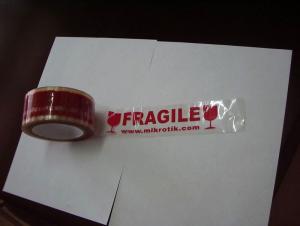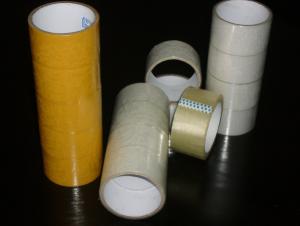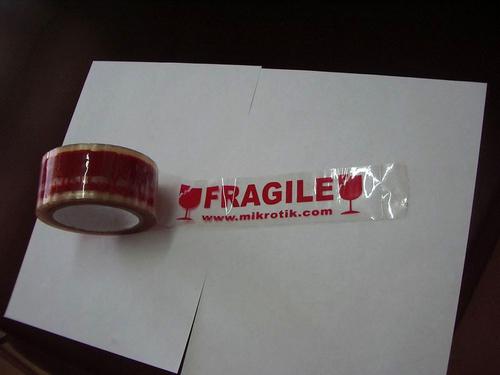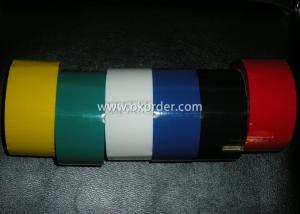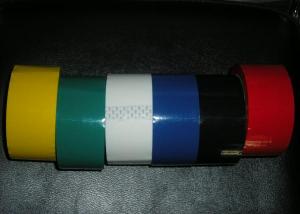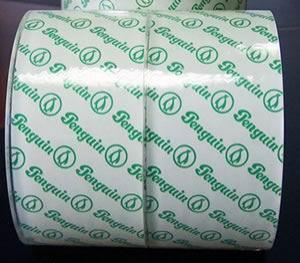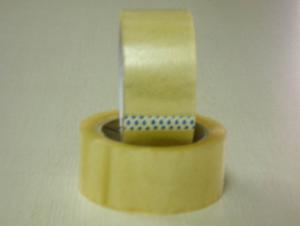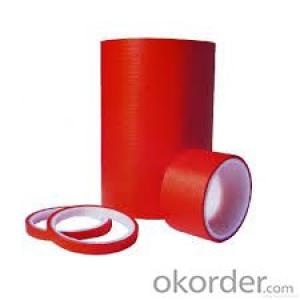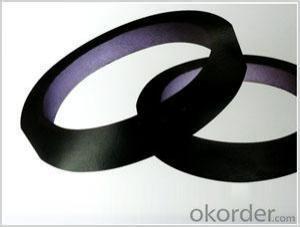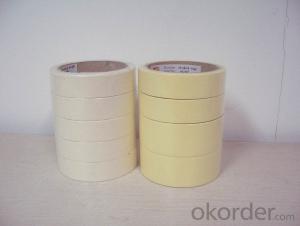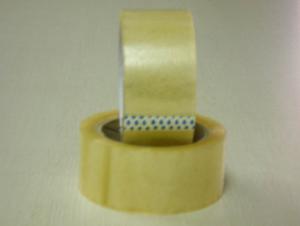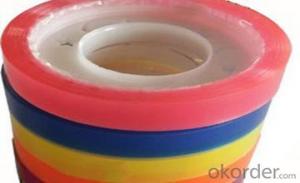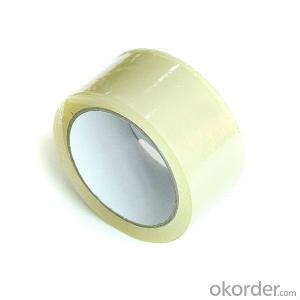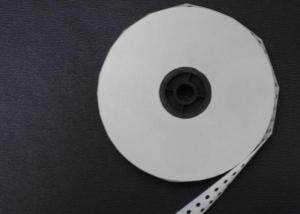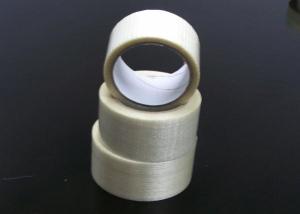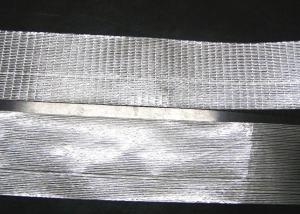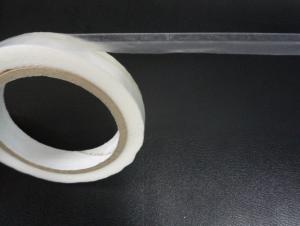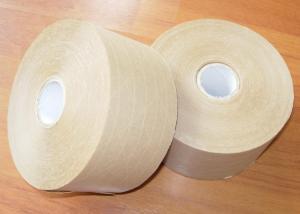Custom Sticky Packaging Tape - Custom Printed BOPP Packing Tape
- Loading Port:
- China Main Port
- Payment Terms:
- TT OR LC
- Min Order Qty:
- -
- Supply Capability:
- -
OKorder Service Pledge
OKorder Financial Service
You Might Also Like
Product Description:
Quick details:
· Material: BOPP
· Use: Carton Sealing
· Adhesive Side: Single Sided
· Adhesive: Acrylic
· Adhesive Type: Water Activated
· Design Printing: Offer Printing
· Place of Origin: China (Mainland)
· color: clear, super clear, crystal clear, red, blue, brown, yellow, green etc
Specifications:
ItemNo. | Carrier | Adhesive | Total | Initial | Peel Adhesion | Holding | Tensile | Elongation |
BP-40 | BOPP film | water based acrylic | 40 micron | >18# | 0.5kgf/25mm | >24h | >30N/cm | <180% |
BP-45 | BOPP film | water based acrylic | 45 micron | >18# | 0.5kgf/25mm | >24h | >30N/cm | <180% |
BP-50 | BOPP film | water based acrylic | 50 micron | >20# | 0.5kgf/25mm | >24h | >30N/cm | <180% |
BP-65 | BOPP film | water based acrylic | 65 micron | >24# | 7.88N/25mm | >40h | >30N/cm | <180% |
Application:
Bopp tape is mainly for Carton sealing & packing, Light duty packaging, bundling, holding, and other office & household use.
Packing:
Paper Core ID: 76mm
Jumbo size: 1280mm x 4000m; 1625mm x 4000m
Cut roll size: As per customer's requirement
Cut rolls: 6 rolls per shrink, 36/54/72 rolls per carton with or without pallet
Jumbo rolls & log rolls: Packed with kraft paper and stretch wrap film, with or without pallet
- Q: Can packaging tape be used for sealing plastic bottles?
- Indeed, the utilization of packaging tape in sealing plastic bottles is possible. Designed with the purpose of providing a secure and tight seal on various surfaces, including plastic, packaging tape boasts robust adhesion. Consequently, it effectively ensures the security and protection of the bottle's contents. Nevertheless, it is crucial to acknowledge that packaging tape may not match the efficacy of specialized bottle sealing alternatives like bottle caps or seals. These alternatives are exclusively crafted for plastic bottles and offer a more dependable and leak-proof seal. Consequently, although packaging tape can serve as a temporary solution, it is advisable to employ proper bottle sealing options for the long-term storage or transportation of liquids.
- Q: Can packaging tape be used for sealing glass bottles?
- Yes, packaging tape can be used for sealing glass bottles. However, it is important to note that it may not provide the same level of security and protection as specialized bottle sealing methods such as corking or using bottle caps. Packaging tape may not be as effective in preventing leakage or maintaining the freshness of the contents.
- Q: Is packaging tape safe for use on sensitive or confidential documents?
- No, packaging tape is not safe for use on sensitive or confidential documents. Packaging tape is designed for sealing boxes and packages, and it is not designed to protect the contents from being tampered with or viewed. It is translucent and can easily be removed or tampered with, compromising the security and confidentiality of the documents. For sensitive or confidential documents, it is recommended to use specialized document security products such as tamper-evident envelopes or security labels with built-in tamper-indicating features. These products provide an additional layer of protection and ensure that any unauthorized access or tampering is evident.
- Q: Can packaging tape be used for sealing gardening or outdoor equipment?
- Yes, packaging tape can be used for sealing gardening or outdoor equipment. Packaging tape is designed to securely seal boxes and packages, making it ideal for sealing equipment such as gardening tools, outdoor furniture, or other outdoor gear. It provides a strong and durable seal that can withstand outdoor conditions, including moisture and temperature changes. However, it is important to note that if the equipment or packaging tape will be exposed to extreme weather conditions or prolonged outdoor use, it may be more appropriate to use specialized outdoor or weather-resistant tape for enhanced durability and longevity.
- Q: How do I prevent packaging tape from yellowing over time?
- To prevent packaging tape from yellowing over time, it is essential to store it in a cool, dry, and dark place. Exposure to sunlight and humidity can accelerate the yellowing process. Additionally, using high-quality packaging tape made from materials resistant to discoloration can help maintain its original appearance for a longer period.
- Q: Does packaging tape come in different adhesion levels for various surfaces?
- Yes, packaging tape does come in different adhesion levels for various surfaces. There are different types of packaging tapes available in the market, each designed to adhere to specific surfaces. For example, there are packaging tapes with low adhesion levels that are ideal for delicate surfaces such as paper or cardboard, as they provide a secure bond without damaging the surface when removed. On the other hand, there are high adhesion packaging tapes that are specifically formulated for sticking to rough or uneven surfaces, such as plastic or metal. These tapes have a stronger adhesive to ensure a secure hold in challenging environments. Additionally, there are also packaging tapes with medium adhesion levels that are versatile and suitable for general-purpose usage on a variety of surfaces. The different adhesion levels allow users to choose the most appropriate packaging tape based on the specific surface they need to adhere to, ensuring optimal performance and reliability.
- Q: Can packaging tape be used for sealing plastic or poly bags?
- Yes, packaging tape can be used for sealing plastic or poly bags. Packaging tape is specifically designed to provide a strong and secure seal on various surfaces, including plastic and poly bags. It has an adhesive backing that adheres well to the plastic material, ensuring that the bag remains tightly sealed. However, it is important to note that there are different types of packaging tape available, so it is recommended to choose a tape specifically designed for sealing plastic or poly bags to ensure optimal performance and long-lasting seal.
- Q: Does packaging tape come in different dispenser designs for ergonomic use?
- Different dispenser designs for ergonomic use are available for packaging tape. Various manufacturers offer dispenser options that are specifically created to provide comfort and ease of use during extended periods of usage. These designs often incorporate features like cushioned handles, ergonomic grips, and adjustable tension control to minimize strain and fatigue on the hand and wrist. Moreover, certain dispensers may possess a lightweight and compact design, making them more manageable and maneuverable. The objective of these ergonomic dispenser designs is to enhance productivity and lower the likelihood of injuries or discomfort commonly associated with repetitive tape dispensing tasks.
- Q: What's the price for BOPP sealing tape printing?
- 15 yuan, you can print with words, looking for finished tape printing machine can be printed
- Q: Can packaging tape be used for sealing packages for shipping?
- Indeed, packaging tape serves the purpose of sealing packages intended for shipping. With its specialized design, packaging tape effectively secures packages, guaranteeing their integrity throughout the transit process. It establishes a robust and long-lasting connection that can withstand the challenges posed by shipping and handling. Whether you're dispatching small or large packages, packaging tape becomes a vital instrument to guarantee the proper sealing and safeguarding of your items as they embark on their journey.
Send your message to us
Custom Sticky Packaging Tape - Custom Printed BOPP Packing Tape
- Loading Port:
- China Main Port
- Payment Terms:
- TT OR LC
- Min Order Qty:
- -
- Supply Capability:
- -
OKorder Service Pledge
OKorder Financial Service
Similar products
Hot products
Hot Searches
Related keywords
